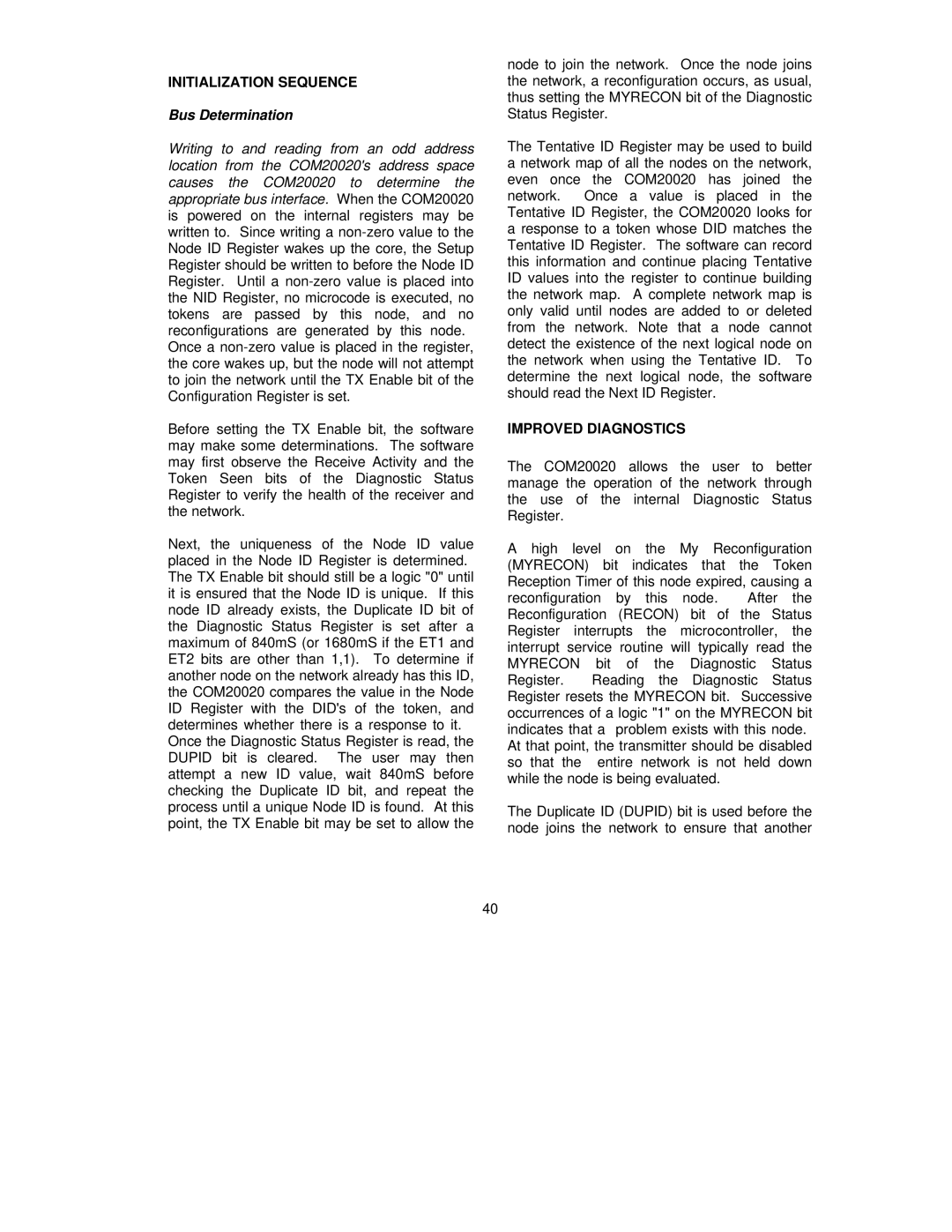INITIALIZATION SEQUENCE
Bus Determination
Writing to and reading from an odd address location from the COM20020's address space causes the COM20020 to determine the appropriate bus interface. When the COM20020 is powered on the internal registers may be written to. Since writing a
Once a
Before setting the TX Enable bit, the software may make some determinations. The software may first observe the Receive Activity and the Token Seen bits of the Diagnostic Status Register to verify the health of the receiver and the network.
Next, the uniqueness of the Node ID value placed in the Node ID Register is determined. The TX Enable bit should still be a logic "0" until it is ensured that the Node ID is unique. If this node ID already exists, the Duplicate ID bit of the Diagnostic Status Register is set after a maximum of 840mS (or 1680mS if the ET1 and ET2 bits are other than 1,1). To determine if another node on the network already has this ID, the COM20020 compares the value in the Node ID Register with the DID's of the token, and determines whether there is a response to it. Once the Diagnostic Status Register is read, the DUPID bit is cleared. The user may then attempt a new ID value, wait 840mS before checking the Duplicate ID bit, and repeat the process until a unique Node ID is found. At this point, the TX Enable bit may be set to allow the
node to join the network. Once the node joins the network, a reconfiguration occurs, as usual, thus setting the MYRECON bit of the Diagnostic Status Register.
The Tentative ID Register may be used to build a network map of all the nodes on the network, even once the COM20020 has joined the network. Once a value is placed in the Tentative ID Register, the COM20020 looks for a response to a token whose DID matches the Tentative ID Register. The software can record this information and continue placing Tentative ID values into the register to continue building the network map. A complete network map is only valid until nodes are added to or deleted from the network. Note that a node cannot detect the existence of the next logical node on the network when using the Tentative ID. To determine the next logical node, the software should read the Next ID Register.
IMPROVED DIAGNOSTICS
The COM20020 allows the user to better manage the operation of the network through the use of the internal Diagnostic Status Register.
A high level on the My Reconfiguration (MYRECON) bit indicates that the Token Reception Timer of this node expired, causing a
reconfiguration by this node. After the Reconfiguration (RECON) bit of the Status Register interrupts the microcontroller, the interrupt service routine will typically read the MYRECON bit of the Diagnostic Status
Register. Reading the Diagnostic Status Register resets the MYRECON bit. Successive occurrences of a logic "1" on the MYRECON bit indicates that a problem exists with this node. At that point, the transmitter should be disabled so that the entire network is not held down while the node is being evaluated.
The Duplicate ID (DUPID) bit is used before the node joins the network to ensure that another
40
